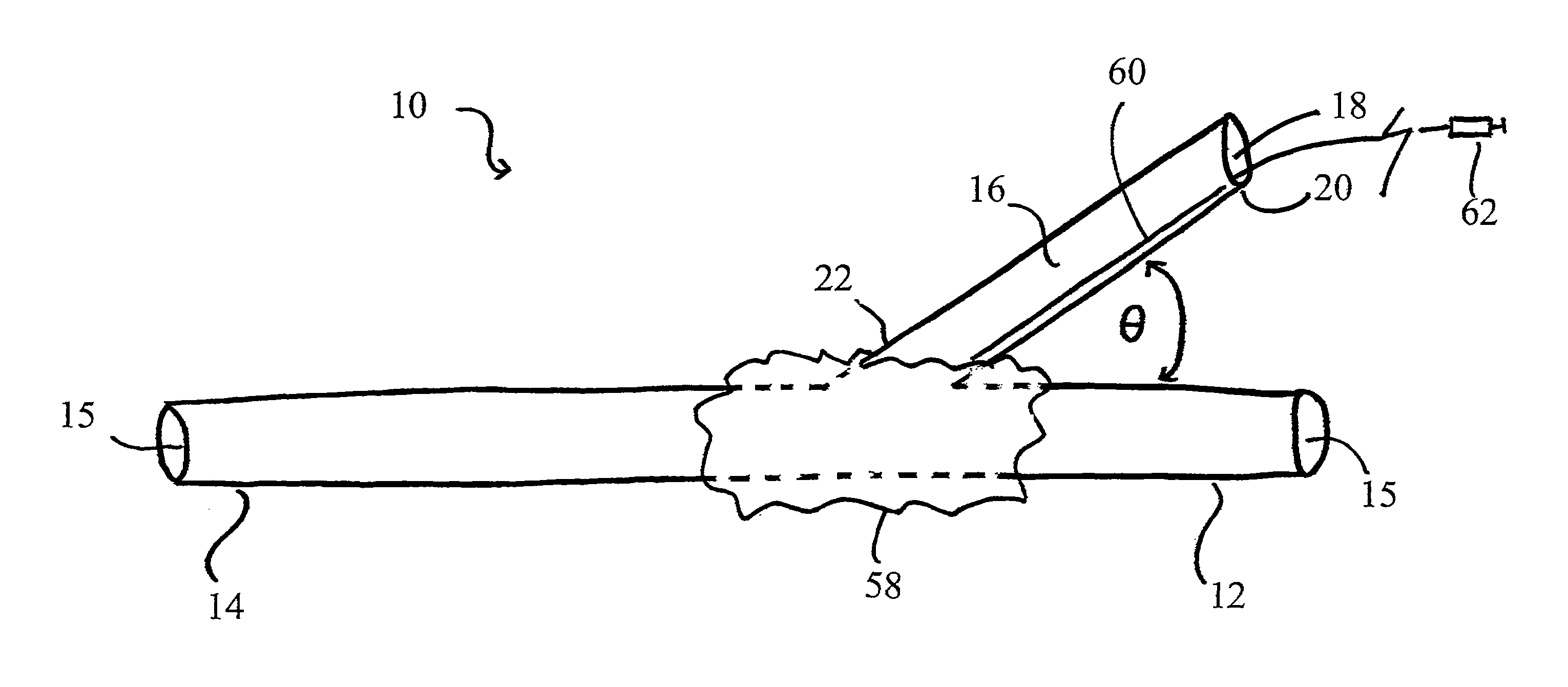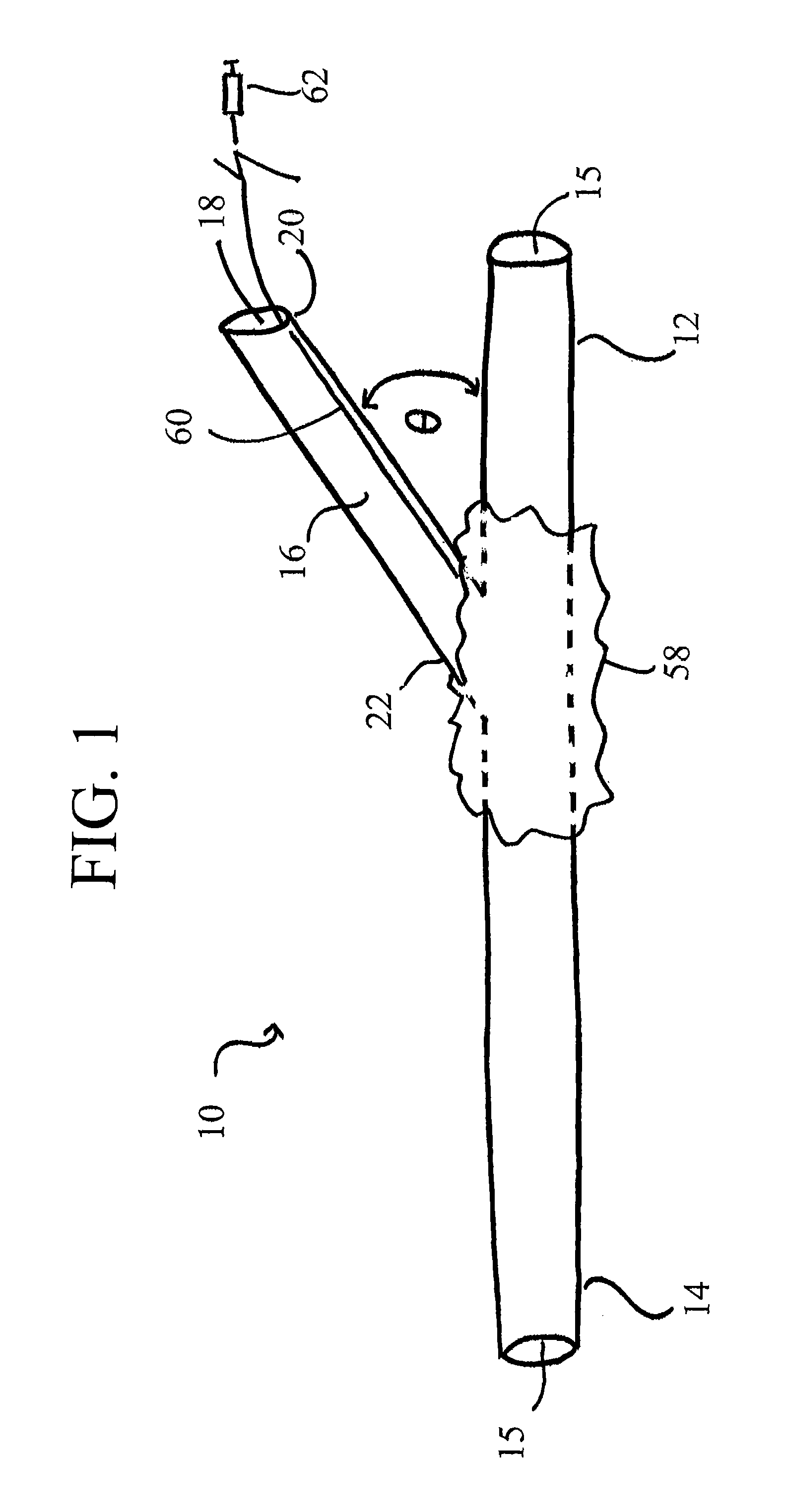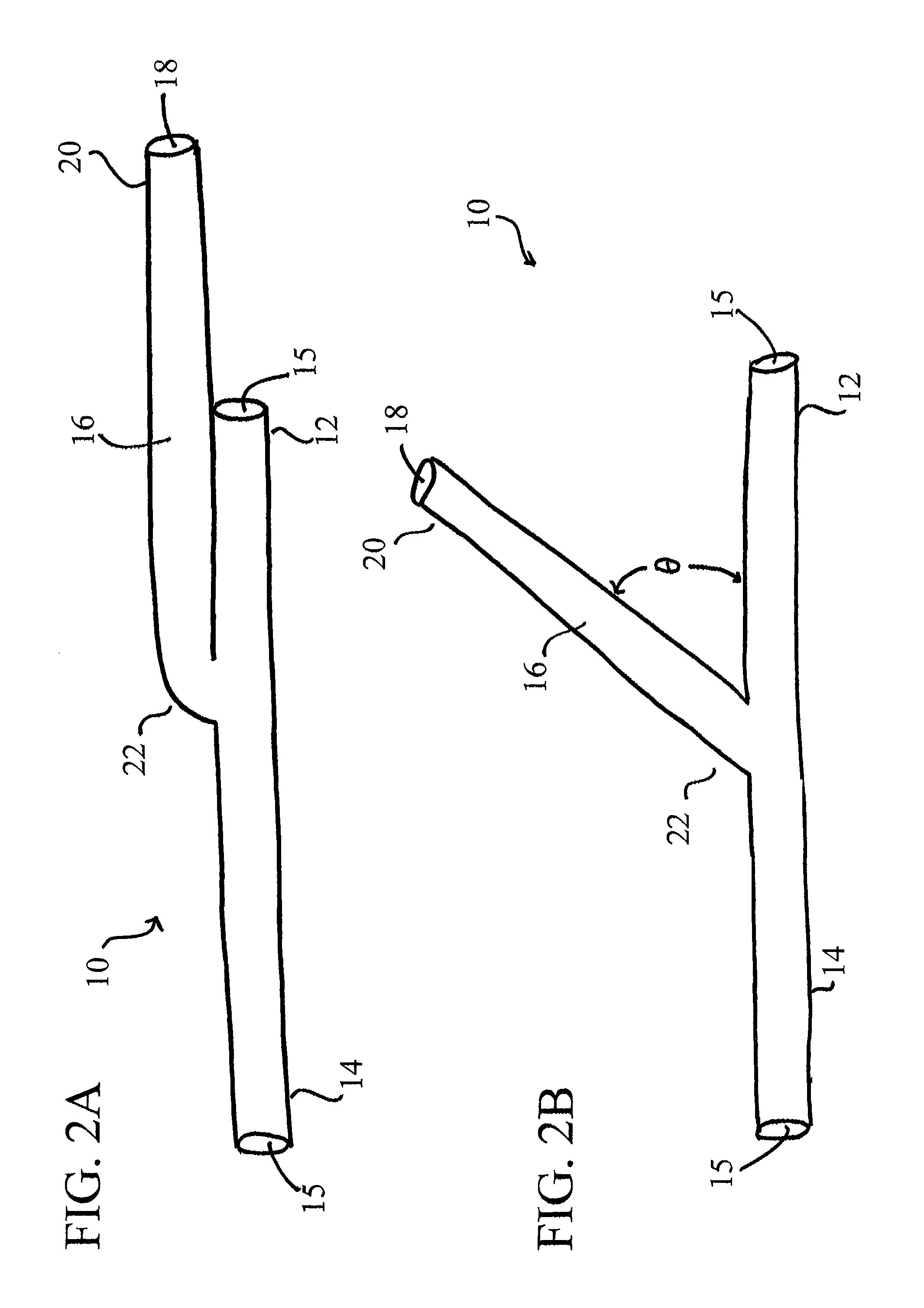Autoretroperfusion devices and systems
a technology of autoretroperfusion and autoreplenia, which is applied in the field of autoreplenia devices and systems, can solve the problems of increasing the risk of having cad that is not effectively treated by conventional revascularization techniques, the percentage of patients diagnosed with symptomatic cad is not suitable for cabg or ptca, and the treatment effectiveness of conventional revascularization techniques is known to be ineffectiv
- Summary
- Abstract
- Description
- Claims
- Application Information
AI Technical Summary
Benefits of technology
Problems solved by technology
Method used
Image
Examples
Embodiment Construction
[0057]It will be appreciated by those of skill in the art that the following detailed description of the disclosed embodiments is merely exemplary in nature and is not intended to limit the scope of the appended claims. The embodiments discussed herein include devices, systems, and methods useful for providing selective autoretroperfusion to the venous system and simultaneously achieving the controlled arterialization of the venous system. The devices, systems and methods disclosed herein can be used to safely and selectively arterialize venous vessels in order to decrease the stress thereon and prevent rupture of the same. Accordingly, through the use of the devices, systems and methods disclosed herein, long-term autoretroperfusion of oxygenated blood through the coronary venous system can be achieved, thereby providing a continuous supply of oxygen-rich blood to an ischemic area of a tissue or organ. While the devices, systems and methods disclosed herein are described in connect...
PUM
 Login to View More
Login to View More Abstract
Description
Claims
Application Information
 Login to View More
Login to View More - R&D
- Intellectual Property
- Life Sciences
- Materials
- Tech Scout
- Unparalleled Data Quality
- Higher Quality Content
- 60% Fewer Hallucinations
Browse by: Latest US Patents, China's latest patents, Technical Efficacy Thesaurus, Application Domain, Technology Topic, Popular Technical Reports.
© 2025 PatSnap. All rights reserved.Legal|Privacy policy|Modern Slavery Act Transparency Statement|Sitemap|About US| Contact US: help@patsnap.com



